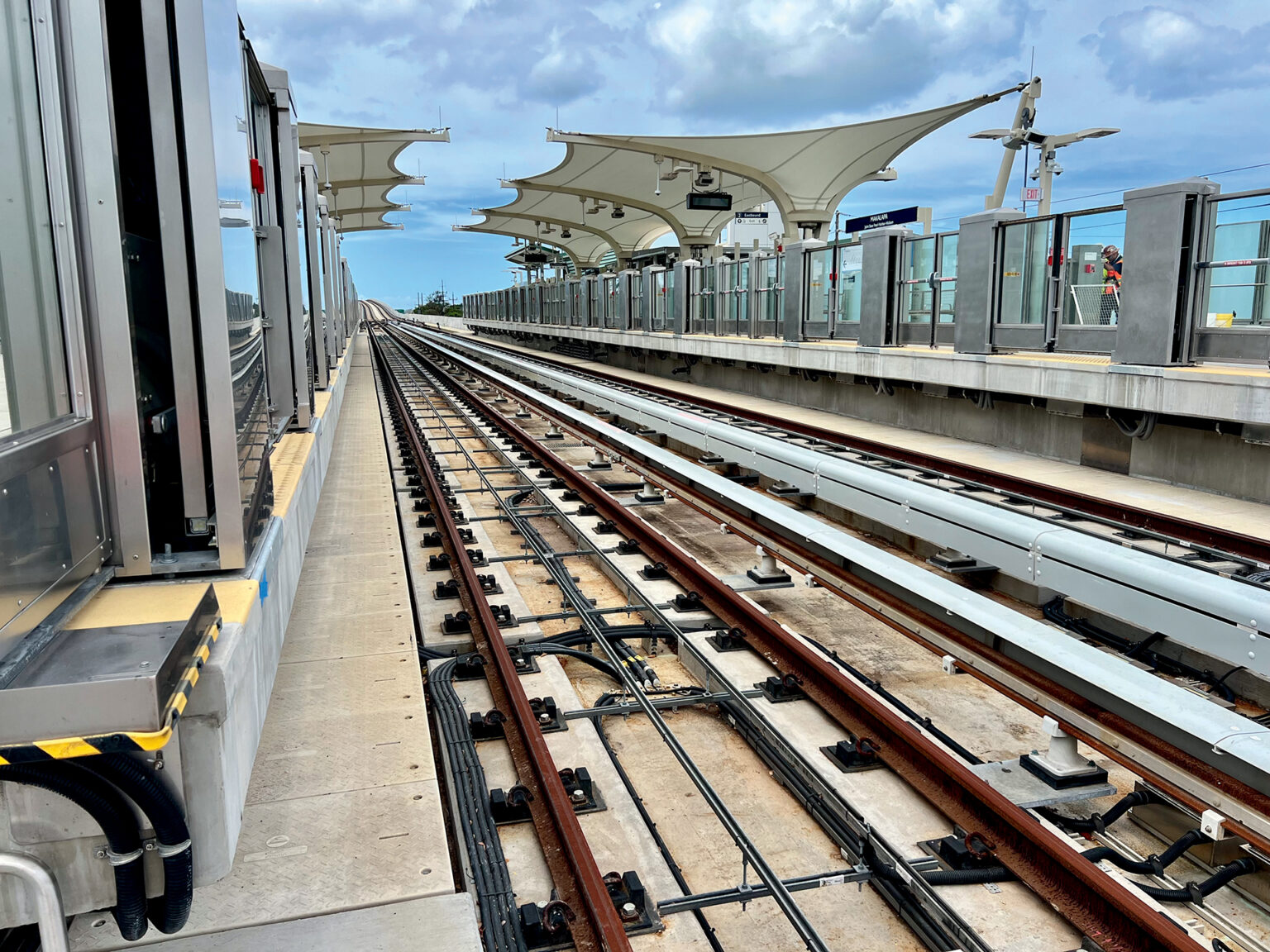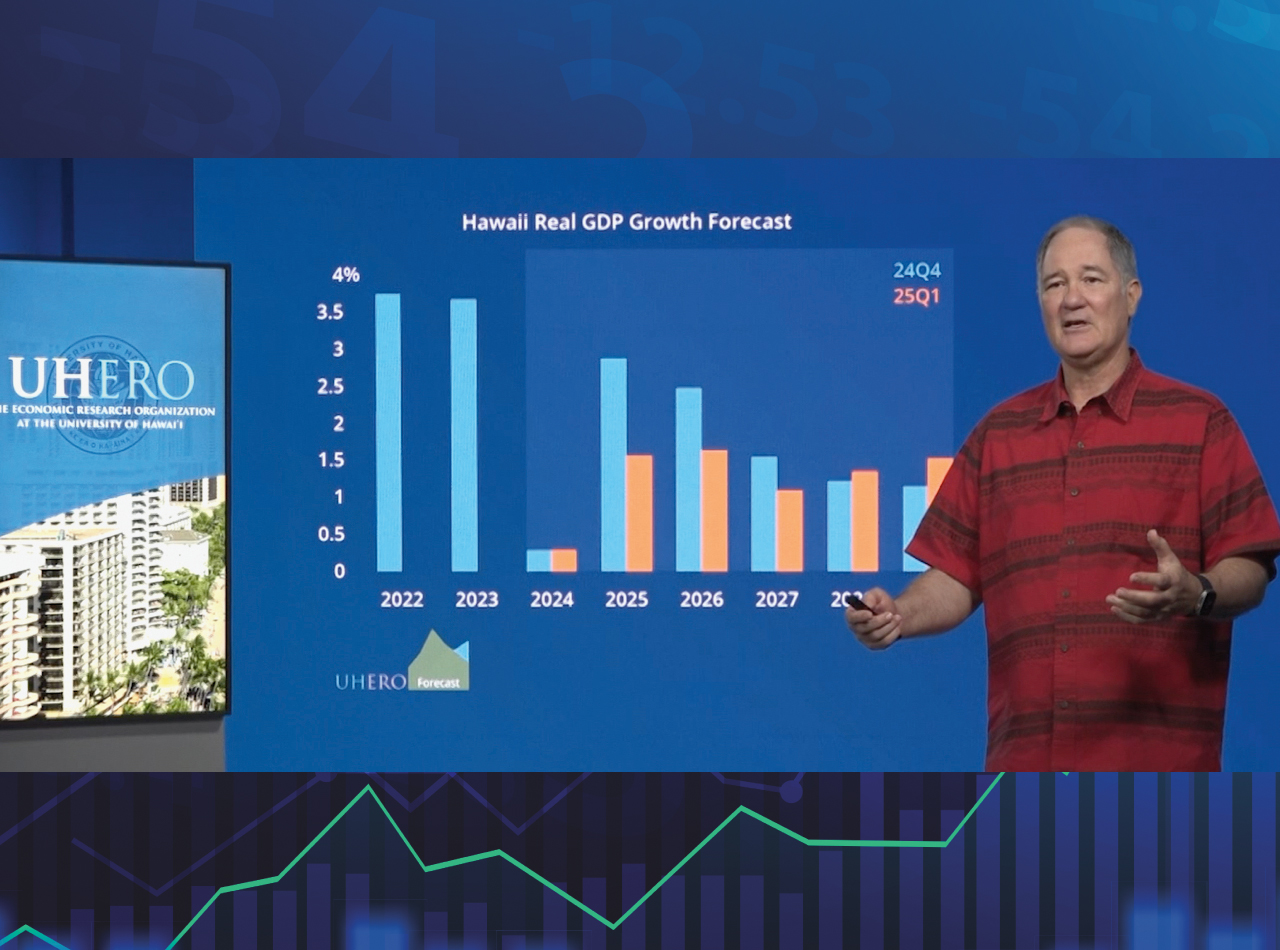

Concrete and cement production is up this year, as they are the materials of choice for most major Hawai‘i projects, from new luxury towers on O‘ahu to the U.S. Navy’s Dry Dock 5 at Pearl Harbor and Skyline’s upcoming Airport Stations Guideway.
But there’s a catch, says Cement and Concrete Products Industry of Hawaii Executive Director Kirk Hashimoto.
“There are many projects on the books, [but] few are commencing,” he says.
Hashimoto believes the disconnect is largely due to a lack of investor confidence — not rising prices, supply-chain snags or other production issues.
Cassie Idehara, Rider Levett Bucknall (RLB) vice president and manager of the firm’s cost consultancy practice in Hawai‘i, tracks price fluctuations in ready-mix concrete, a key component in local concrete projects.
She sees a similar trend.
“Although a robust volume of construction is underway in 2024, major projects that utilize ready-mix concrete have already been contracted,” she says. “RLB-recorded cost increases in 2023 likely [reflect] materials buy-out activity for projects that are now ongoing, but since [then], prices for ready-mix concrete have remained flat through the first half of 2024.”
This may benefit builders’ bottom lines since cement and ready-mix concrete are “extensively used in Hawai‘i construction due to the region’s susceptibility to rust issues with structural steel,” Idehara adds.
With structural steel in limited use and with current projects becoming larger and more complex, Hawai‘i builders in 2024 are turning to new concrete technologies and refining older ones to meet the increasingly rigorous demands of Hawai‘i construction.

EMBRACING NEW TECHNOLOGY
“One of the technologies, [Type 1L] portland-limestone cement has near 100 percent adoption, as that’s now the general-use cement that’s imported for use in Hawai‘i,” Hashimoto says.
This type of portland-limestone cement (PLC) adds limestone during production, which reduces carbon dioxide emissions.
“The switch to portland-limestone cement … resulted in a carbon reduction credit of 10 percent and has performed well in Hawai‘i,” Hashimoto says. “The diligence of the cement supplier here to supply our diverse market resulted in few difficulties.”

At the Navy’s Dry Dock 5 project, “specialized marine-grade concrete blends that meet U.S. Government specifications have been developed for construction,” says Roy Morioka, project manager for DHO JV, the project’s general contractor. “The concrete mixes incorporate the more sustainable cement Type 1L … [and are] engineered to provide at least 100 years of service life in the marine environment.”
DHO JV is producing nine precast floor units (PFUs) that will form the base of the 650-foot-long dry dock and will transport them from Waipio Peninsula via a semi-submersible barge sometime between the second and third quarter of next year.
Morioka says the process includes moving PFUs using self-propelled modular transporters from the Waipio yard to a barge, then transporting them across Pearl Harbor and floating the units into place via controlled immersion. The process is expected to take about one week per PFU.
Approximately 250,000 cubic yards of concrete are being supplied by Hawaiian Cement, HC&D and Island Ready-Mix Concrete Inc. to complete work at the dry dock, support areas and ancillary structures.
“We’ll have over 300 salary and craft workers involved just for concrete construction,” Morioka says. “We’re looking forward to ramping up the work, which will be an opportunity to showcase local union talent available in Hawai‘i.”
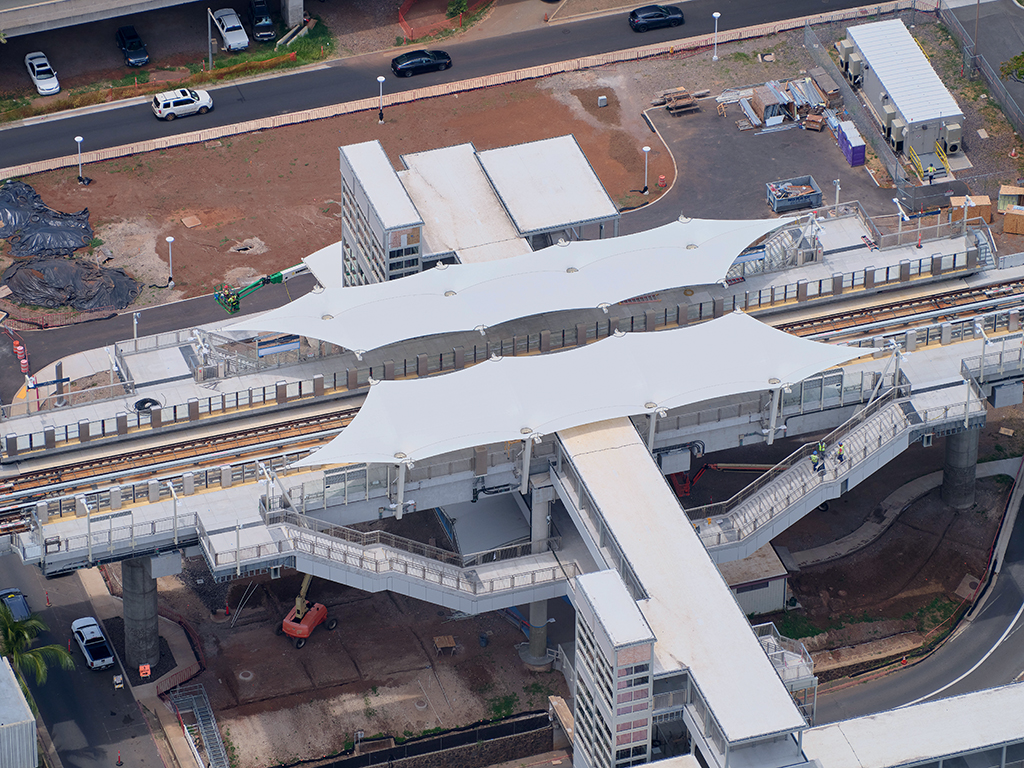


HIGH-STRENGTH CONCRETE ELEVATES BUILDS
HC&D produces high-strength concrete currently used to build many new high-rise projects.
“There’s several different mixes, each designed specifically for our customer’s needs and specifications,” says HC&D Technical Services & Quality Control Manager Scott Ballard. “Anything over 6,000 psi (pounds per square inch) can be considered non-standard or high-strength concrete.”
High-strength concrete — combined with post-tensioning, which fortifies concrete with embedded steel cables — are the building blocks of Skyline’s Airport Guideway and Stations (AGS) project linking Joint Base Pearl Harbor-Hickam to the rail project’s Middle Street Transit Center, says Honolulu Authority for Rapid Transportation (HART) Project Director Vance Tsuda.
“The concrete was specifically designed for the project … [with] differing psi for specific areas. For example, the guideway segments, C-bents, L-bents, hammerheads and straddle bents required 6,500 psi [concrete], and the platform girders required 6,000 psi concrete,” he says.
All segments of the guideway were cast at the Kapolei Precast Yard and feature extensive post-tensioning “for the segments in both the transverse and longitudinal directions; as well as longitudinally for the straddle bents, C-bents, L-bents and hammerheads.”
Tsuda adds that “design for the segments was reduced to 4 feet, 6 inches instead of the traditional 8-foot, 6-inch segment” due to flight path restrictions near Daniel K. Inouye International Airport and tight vertical clearance between the guideway and the roadway beneath.
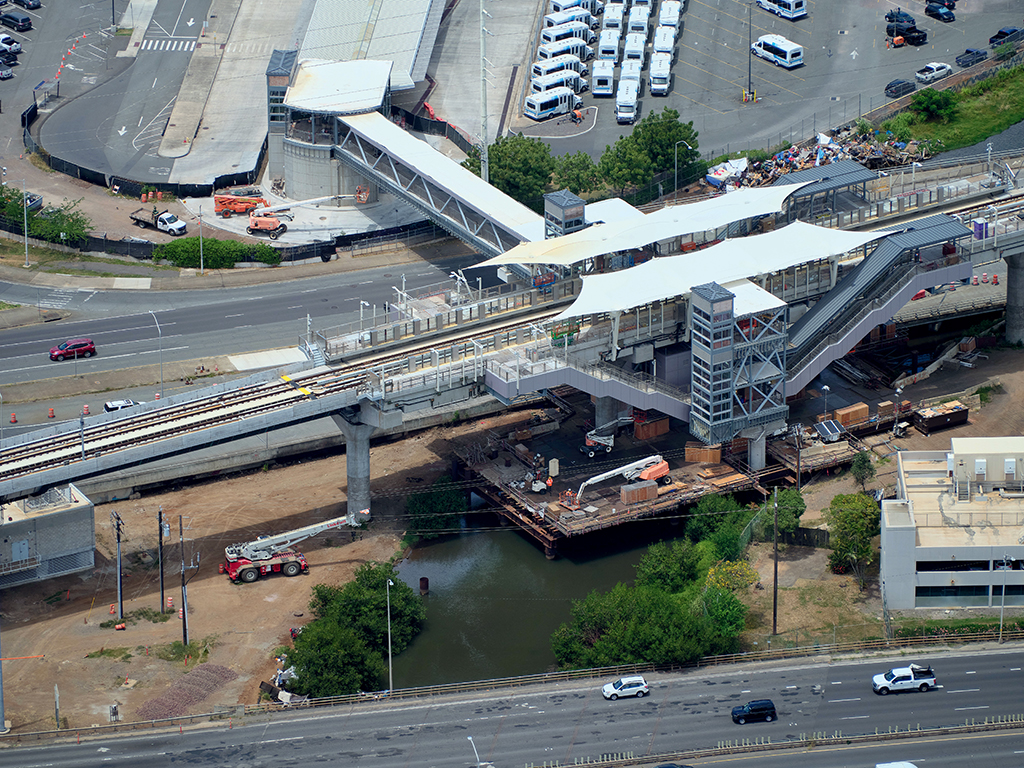
At Skyline’s Kahauiki (Middle Street) Station, the contractor is working to finalize the last structural components prior to removing a stream trestle and beginning the punch list phase.
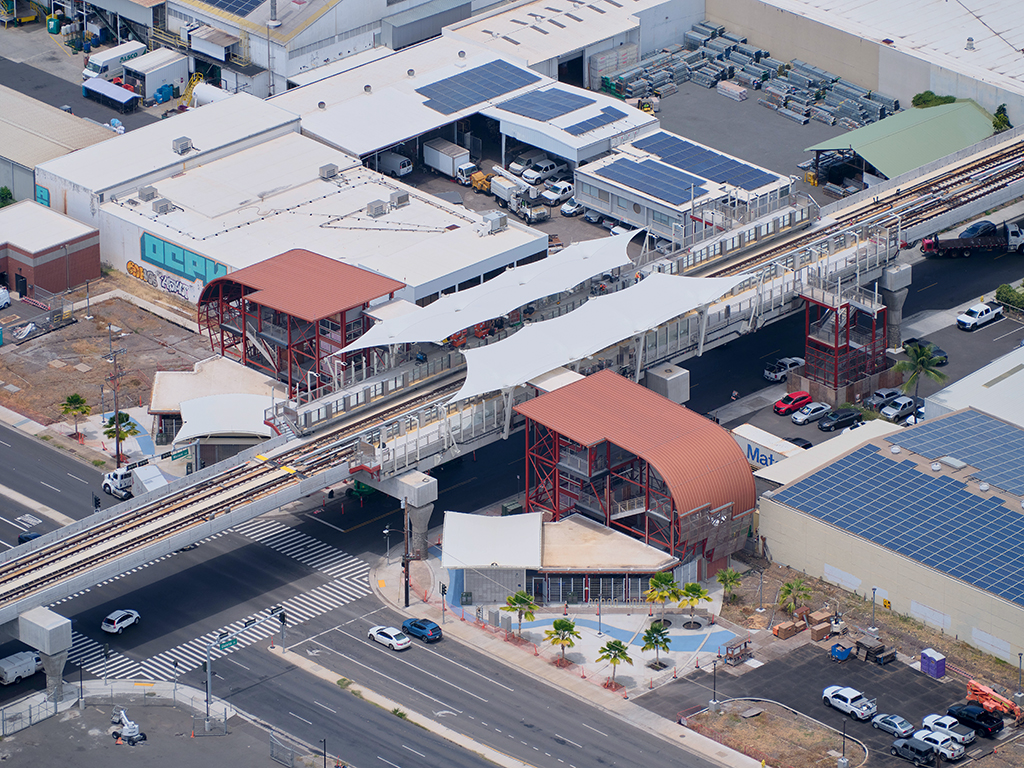
Work continues on structural components and painting at Skyline’s Ahua Station on Lagoon Drive. PHOTO COURTESY HONOLULU AUTHORITY FOR RAPID TRANSPORTATION
“These segments were integral with the straddle bents and adjacent spans, requiring precision for match-casting segments at the precast yard and installation of segmental post-tensioning in the field,” he says.
According to Tsuda, the guideway and Pearl Harbor station “have reached substantial completion” as of mid-June, but the “overall AGS contract has not yet achieved substantial completion status.”
Substantial completion for the full contract is expected by September, with a contract closeout date “in early 2025,” he says.
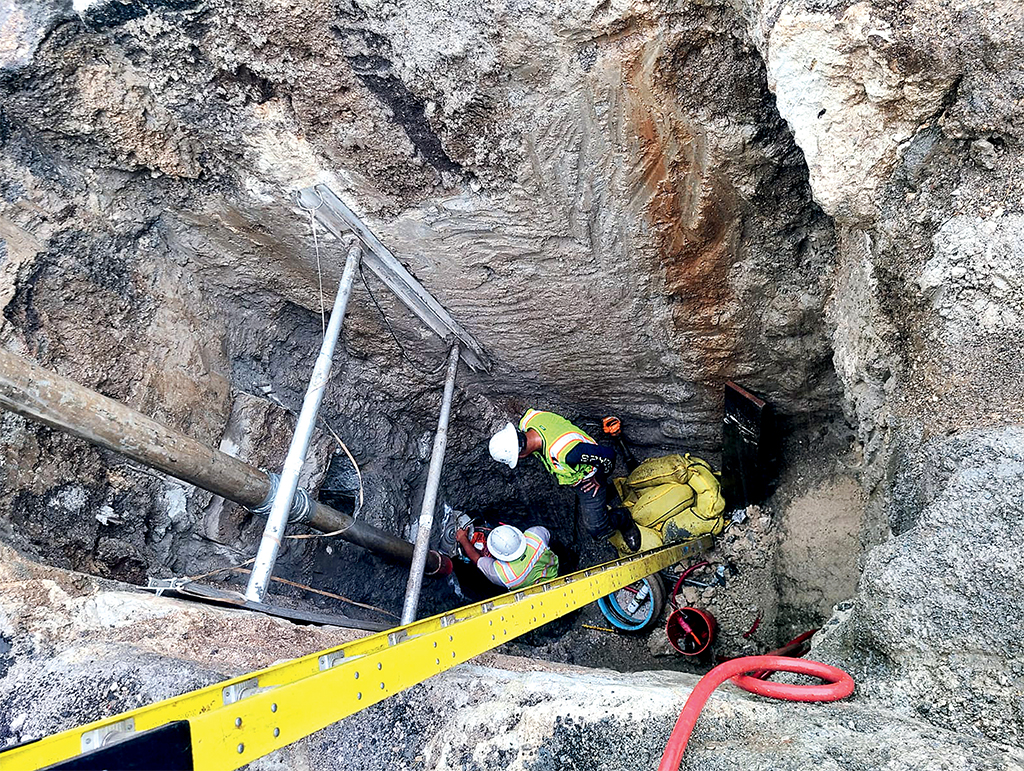
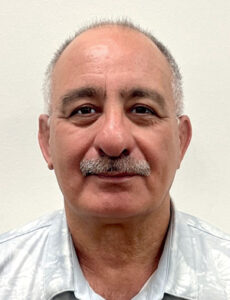
JET GROUTING HELPS STABILIZE EXCAVATION WORK
At HART’s City Center Utilities Relocations and Roadway Improvements IV project, currently underway by Nan Inc., excavation sites “extend to depths of 25 feet below the water table,” says Ed Shukri, Nan Inc. vice president.
Work involves “excavating through a spaghetti of aged existing utility lines that can range up to 42 inches in diameter,” he says. To build major underground utilities and structures in these sites, the company is self-performing combined methods of soil-mixing and jet grouting.
“Jet grouting essentially involves injecting high-pressure cement grout underground, which permeates the soil within an excavation zone and all around the existing utilities,” Shukri explains. “This creates a semi-watertight seal and stabilizes the varying types of soft unstable soils, [providing] the structural support needed to hold the existing utilities in place while excavating around and under them.
“The result is a semi-dry and stable trench that the crew is safe to work in.”

Tall drills used in Nan Inc.’s jet grouting operations are precisely angled to avoid power lines both above ground and underground. PHOTO COURTESY NAN INC.
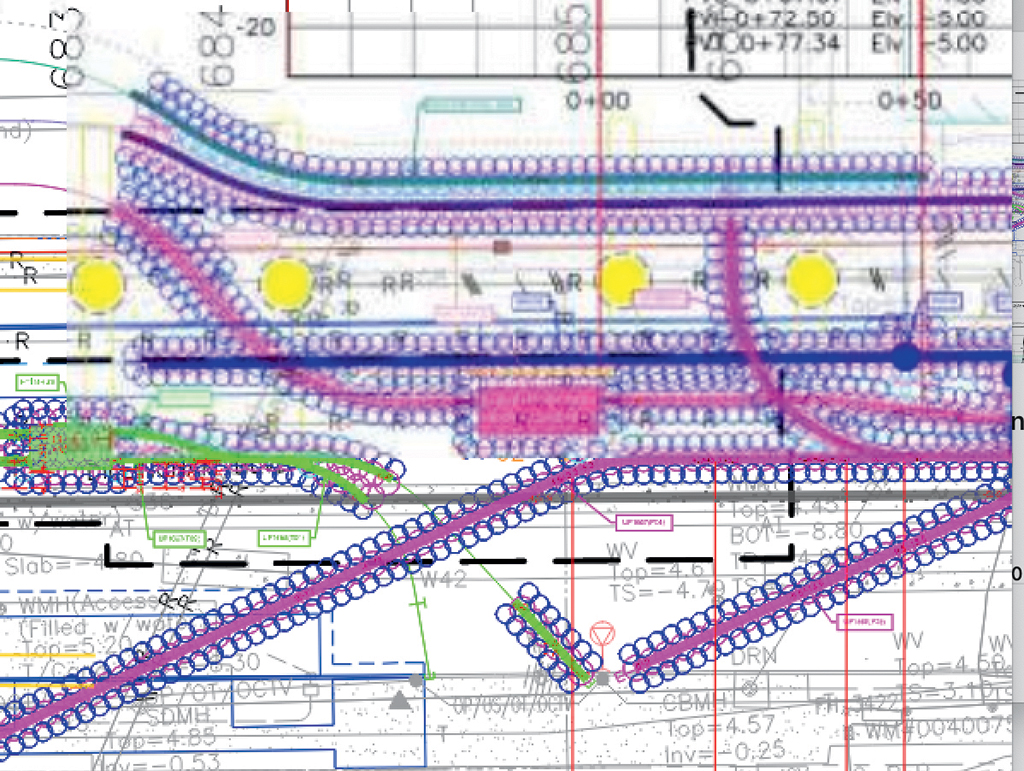
A map shows an overlapping pattern of underground jet grout columns (white circles) currently being installed beneath Dillingham Boulevard. IMAGE COURTESY NAN INC.
According to Shukri, “proper care must [also] be given to avoid breaching the utilities by coming into [physical] contact with the lines or by over-pressurizing the grout, in which pressure is monitored and adjusted depending on spacing of [guideway] columns, specific soil conditions, depth and the material type of each adjacent utility line.
“Mistakes can be catastrophic if a breach occurs in a major utility line, such as a sewer main or an electrical or communication trunk line, or from heaving the surface of the active and busy roadways above,” he says.
To avoid mishaps, the excavation path and surrounding utilities must be carefully mapped to properly cement-treat soil around existing lines and provide a semi-watertight seal.
“The lines are then physically located onsite, and each cement-treated column is meticulously drilled in an overlapping pattern at varying depths and angles,” says Shukri.
Jet grouting is also generally required to be performed at night, to help reduce traffic impacts in and around busy intersections.

LOOKING AHEAD TO 2025
Hashimoto says national projections for the concrete industry indicate a slow rebound during the second half of 2024.
“Projects on the books seem to support [this] possibility,” he says. “However, investor and owner confidence determine the activity in the second half of the year.”
Investor confidence may be boosted by 2025 material cost projections.
“Like construction labor, raw material pricing is subject to the forces of local supply and demand. When new project starts drive demand, prices for raw materials experience upward cost pressure,” says RLB’s Idehara.
“However, cement and ready-mix concrete … present a unique case. Their widespread application relative to the scale of other materials used in a project (particularly in high-rise and infrastructure works) often leads to significant cost impacts.
“Suppliers of ready-mix concrete have been able to maintain more consistent pricing since 2019, and RLB has only recorded one or two price adjustments (each in the range of a 6 to 8 percent quarter increase) in a given year. RLB is anticipating a volume of new project starts that may lend to price adjustments in 2025, and although we cannot forecast when, or at what frequency, quarterly price adjustments are unlikely,” says Idehara.

